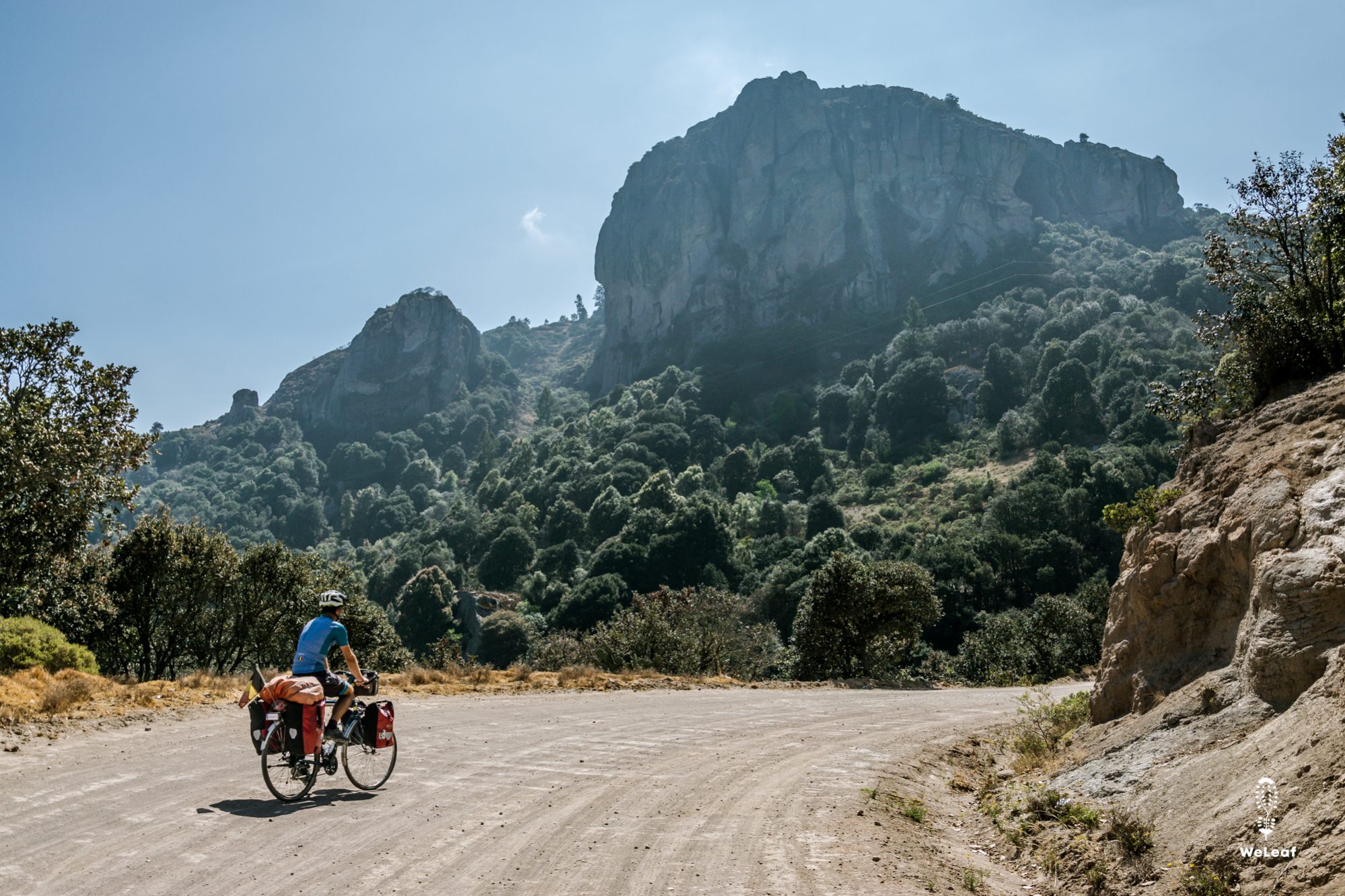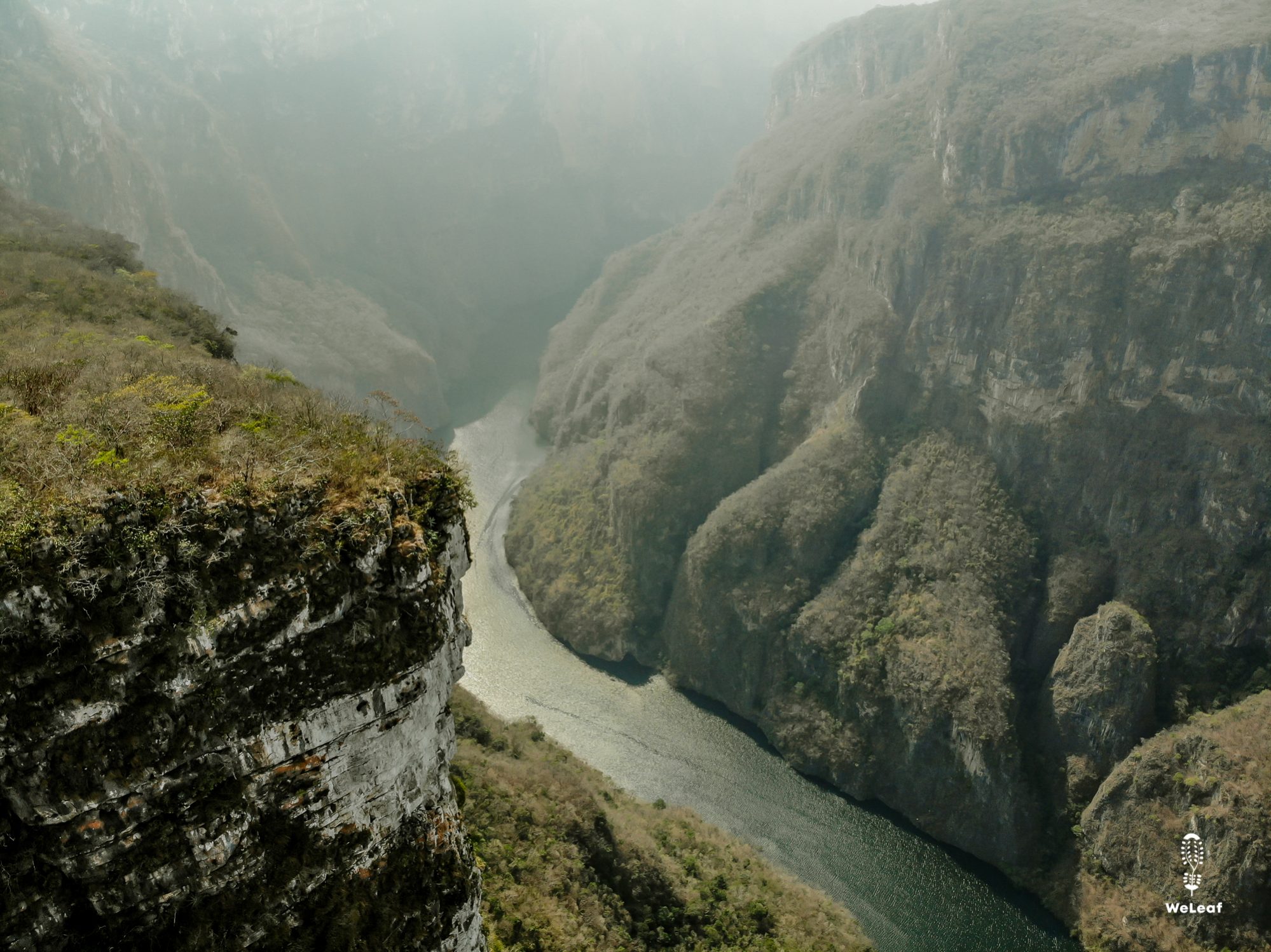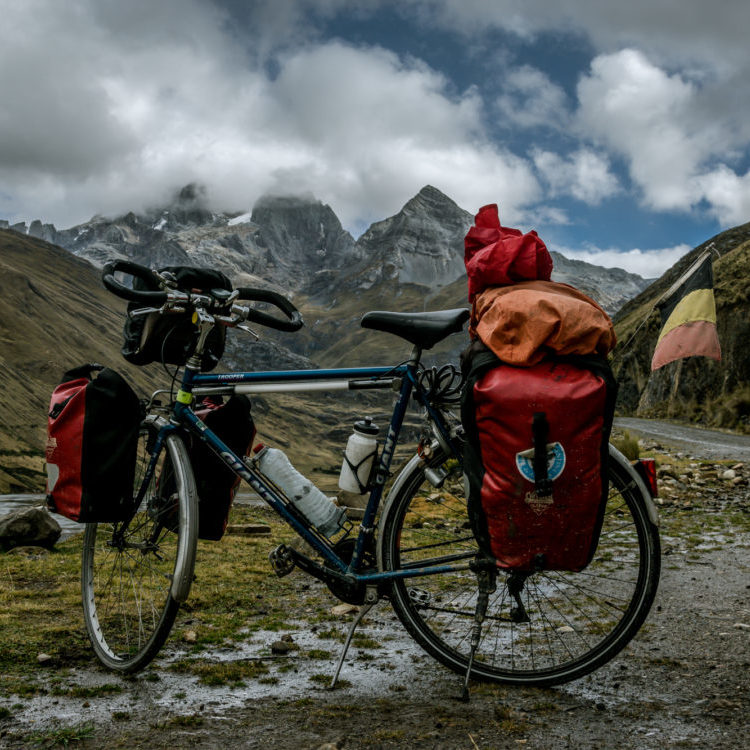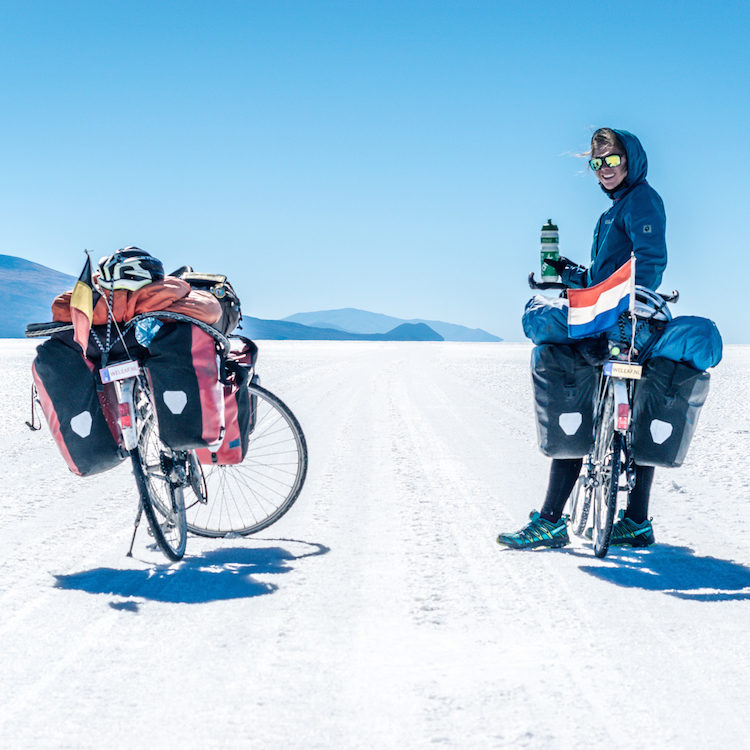
God tur
July 31, 2020
Criss crossing Jutland
August 19, 2020Cycling in Mexico
Mexico, according to many cyclists, one of the best countries for cycling. Because of the delicious food, the hospitable people, the beautiful nature and the countless routes. We cycled more than 3,000 kilometers from south to north and crossed many provinces. Until halfway Mexico didn’t convince us, but by the time we reached the US border we were in love with this beautiful country. Especially the eastern part in the provinces of Hidalgo and San Luis Potosi are beautiful with the Ruta Huasteca as the highlight. It deserves a place in the top five of the best cycling countries.
Pesos
In Mexico they use Pesos. In December 2019 the official rate was €1 = 21 Pesos.
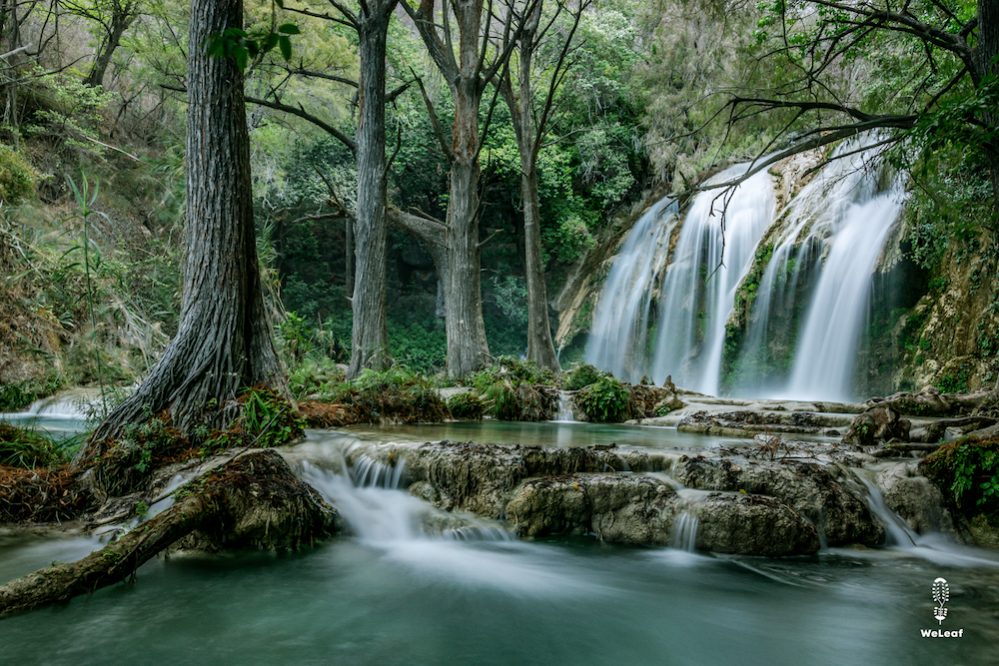
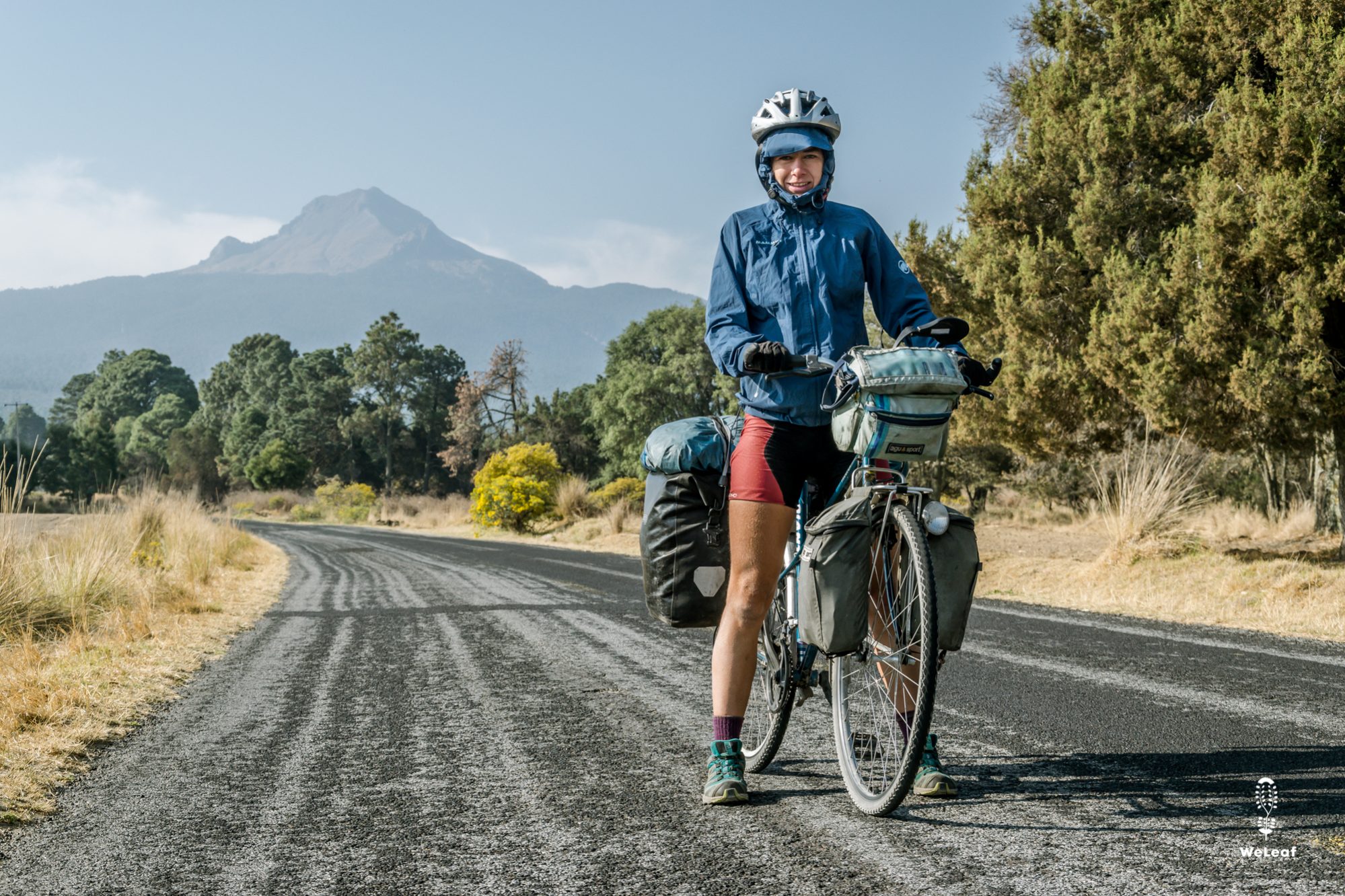
Our route
Our route differs from the popular Alaska-Patagonia route along the west and that brought us special experiences. There are hardly any cyclists in the Northeast and we found the people extremely hospitable.
There are countless routes to choose from in Mexico, from major highways to small unpaved roads. Everything within a radius of a hundred kilometers around Mexico City is busy, even the small roads, but once further from Mexico City it is usually quiet and pleasant to cycle. Another advantage, at least according to us, are the many asphalt roads. Even small, white roads on the map are often paved. Google Street View is very extensive in Mexico and that makes route planning a lot easier.
Some highlights:
- Yucatan: the tropical Yucatan is perhaps a bit boring for cycling with its long, flat roads, but the many cenotes (underground caves for swimming), Mayan temples and unique culture are worth exploring the area.
- Chiapas and Tuxtla: the provinces of Chiapas and Tuxtla are dry and not very special, but there are a few natural phenomena that make it beautiful. The Canyon del Sumidero, the waterfalls El Chiflon and Aguacero are particularly beautiful.
- Hidalgo and San Luis Potosi: for us this is the highlight of Mexico. Green hills, quiet roads, authentic culture, hospitable people and beautiful waterfalls. What do you need more? Discover the Ruta Huasteca, an absolute must.
Sleeping
Finding places to sleep in Mexico is very easy. Wild camping, with or without the owner's permission, is no problem. In the tourists attractions, like many waterfalls, you always have to pay, although it is usually only 30 to 40 pesos per person. In the villages there are always small hotels for affordable prices, but more expensive than South America.
The Warmshower network is large and there are other Facebook networks such as the RACmex and EnlaceBikers who are happy to help with a place to sleep. In small villages we regularly went to the Presedential or the Municipio for a safe place.
Climate
Mexico is a big country with different climate zones. The north-facing areas mainly have a desert-like climate. Central, around Mexico City, there is a steppe climate and the southern areas are more tropical. In general, the dry season is between November and April, which may be the best time to visit Mexico. Yet the rainy season, with the exception of Yucatan, is not extreme.
Food and water
Mexico is known for its delicious and spicy food, often with a lot of fat and in huge quantities. Add a sweet lemonade or a 2.5 liter bottle of coca cola and the meal is complete. No wonder the Mexicans are so fat. Every region has its own specialties, although you will find tacos and quesadillas everywhere. These are a few typical dishes of the regions that we passed:
Yucatan: pescadillas: fried empanadas with fish
Oaxaca:
tlayudas: a folded tortilla with cheese, meat and vegetables
Quesillo: the typical Oaxaca cheese that you pull apart into small threads.
Garnachos: small fried tortillas with tomato sauce, meat and cheese.
Mole negro: a sauce based on many ingredients including chocolate.
Hidalgo: Barbacoa: sheep meat that cooks for 8 hours at night in a hole in the ground, covered with large cactus leaves. It is a typical breakfast on a weekend.
Even in the smallest villages you will always find a small store with basic products. Of course they have a selection of chips and cola, but also pasta, a few vegetables, bananas, bread and avocados. There are supermarkets in the slightly larger villages. Our favourites and the cheapest grocery stores are Soriana and Mi Bodega.
We always asked for water from locals or from a restaurant. Most of the times they gave us water from a big water bottle and rarely from the tap.
Price of basic products
Mexico is relatively cheap, especially if you come from the north. Prices are similar toGuatemala and Central America. The south of Mexico is cheaper than the north, almost twice as cheap for vegetables, fruit and a menu in a restaurant.
Night in a hostal: starting at 200 pesos for double room
Bread: 5 to 6 rolls for 10 pesos (in supermarket)
Bananas: 10 pesos for a kilo
Milk: 18 soles for 1 liter, or 10 soles for a kind of milk/vegetable oil mix
Lunch or dinner: 30 pesos for a huevos a la mexicana (rice, tortillas, scrambled eggs with tomatoes and onions)
250 grams of cheese: 20 pesos (quesillo)
1 egg: 2.5 pesos
Our average daily expense in Mexico was barely € 11.50. We spent 57 days in Mexico and almost always slept in our tents, were invited by families or used the warmshowers network. A few times we slept in an Airbnb or on a paid campsite near a tourist place.
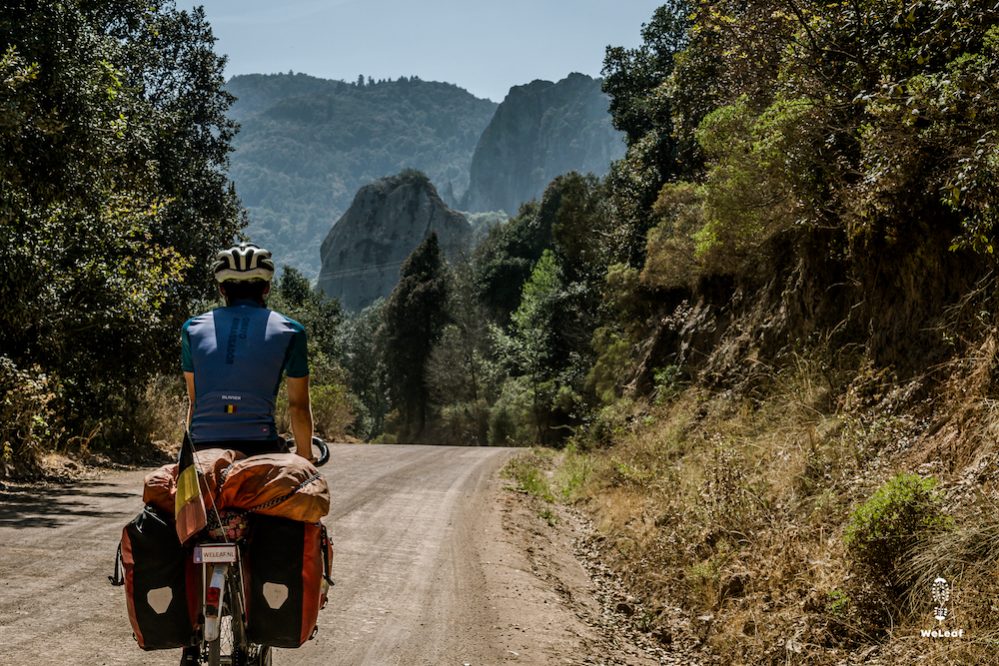
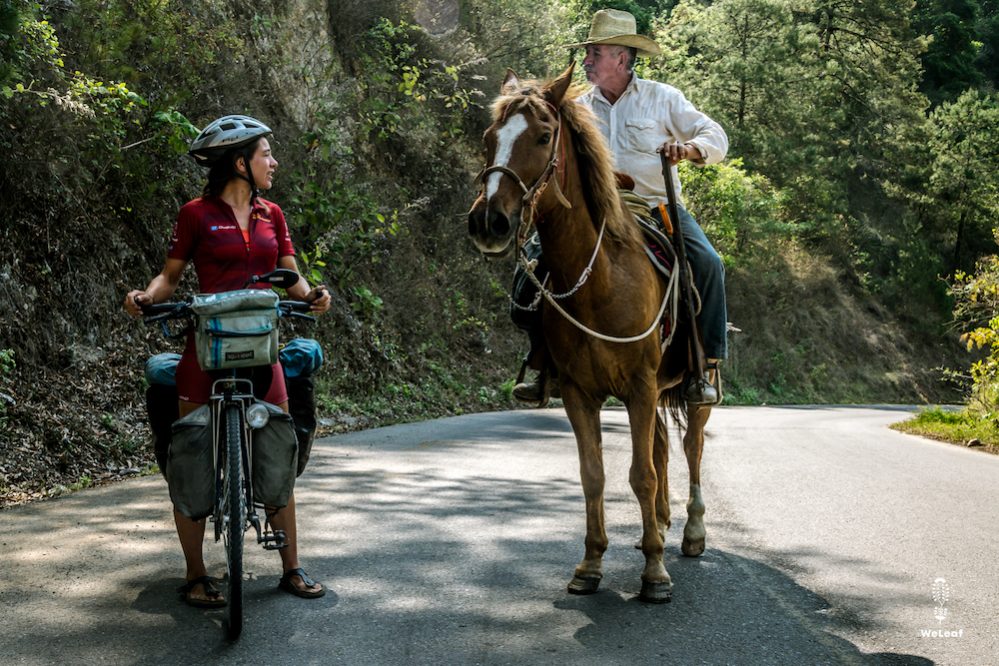
Watch out for?
Gracias a Dios border crossing (Chiapas - Guatemala). We took the border crossing to Mexico in Gracias a Dios. It is a very small border where not many people pass. Leaving Guatemala was no problem, but to enter Mexico, we had to pay a fee of 550 pesos to get our 90 day visum. The problem is that you cannot pay at this border because you are supposed to get the receipt for the visum in a bank and there is no bank in the border. The only option is to take a seven-day visa and hope that this will not cause any problems if you leave Mexico. The other option is to cycle to the other border, one extra day on the bike. We took the seven day visum and also took a picture from the law that was printed on the wall in the border. There was written that ‘in case you overstay your seven day visum, you will pay the full amount of 550 pesos when leaving the country’. This was our backup in case we would had problems. In the end there was no control when we left Mexico to the US and so, maybe a little bit illegally, avoided some problems.
Canyon del Sumidero: the highlight in Tuxtla is the Canyon del Sumidero. There are two options to visit the Canyon: by boat through the canyon, or to the lookout points at the top of the canyon. We chose the lookout points and cycled up. But beware! As a cyclist you are only allowed to cycle into the park between 6 a.m. and 8 a.m. You can stay as long as you want, but you won't get in after 8 hours. Although it is not allowed to camp near the lookout points, it looks possible.
Northern border: the northern border with the US, especially the province of Tamaulipas in the east, is dangerous. We didn't believe all the stories at first until were near the border ourselves. The last 40 kilometers were controller by the drug cartels. There was no police, only armed men on the side of the road who communicate with walkie talkies. We were questioned and asked for our passports. Fortunately, we were allowed to cycle further, but felt extremely unsafe. We strongly advise against cycling here and advise you to take a bus to the border. The rest of Mexico is safe and you won’t have any problems.
